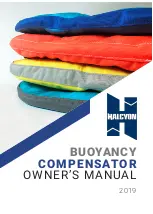
F-8
Measurement Considerations
Electrochemical effects
Error currents also arise from electrochemical effects when ionic chemicals create weak bat-
teries on a circuit board. These batteries could generate a few nanoamps of current between
conductors. Ionic contamination may be the result of body oils, salts or solder
fl
ux. The prob-
lem is further enhanced by high humidity (moisture) that decreases insulation resistance.
When building test
fi
xtures, select insulators that resist water absorption, and use the
fi
xture
in a moderate humidity environment. Also, be sure that all insulators are kept clean and free of
contamination.
Humidity
Excess humidity can reduce insulation resistance on PC boards and in test connection insu-
lators. Reduction in insulation resistance can, of course, seriously affect high-impedance mea-
surements. Also, humidity (moisture) can combine with contaminants to produce offset
currents caused by electrochemical effects (see
Electrochemical effects
). To minimize the
effects or moisture, keep humidity to a minimum (ideally <50%), and keep components and
connectors in the test system clean.
Triboelectric effects
Triboelectric currents are generated by charges created between a conductor and an insulator
due to friction. Here, free electrons rub off the conductor and create a charge imbalance that
causes the current
fl
ow. For example, bending a triaxial cable causes friction between the center
conductor (HI) and its surrounding insulator resulting in triboelectric currents.
Triboelectric currents can be minimized as follows:
•
Use
“
low noise
”
cables. These cables are specially designed to minimize charge gener-
ation and use graphite to reduce friction. The triax cable supplied with the Model 6430
is low noise.
•
Use the shortest cables possible, and secure them (i.e., taping or tying) to a non-
vibrating surface to keep them from moving.
Piezoelectric and stored charge effects
Piezoelectric currents are generated when mechanical stress is applied to certain insulating
materials (i.e., crystalline). In some plastics, pockets of stored charge cause the material to
behave in a similar manner.
When building test
fi
xtures, choose good insulating materials and make connecting struc-
tures as rigid as possible. Make sure there are no mechanical stresses on the insulators.
Dielectric absorption
Dielectric absorption in an insulator can occur when a voltage across that insulator causes
positive and negative charges within the insulator to polarize because various polar molecules
relax at different rates. When the voltage is removed, the separated charges generate a decaying
current through circuits connected to the insulator as they recombine.
Summary of Contents for 6430
Page 26: ......
Page 32: ......
Page 78: ...2 14 Connections ...
Page 98: ...3 20 Basic Source Measure Operation ...
Page 138: ...5 30 Source Measure Concepts ...
Page 156: ...6 18 Range Digits Speed and Filters ...
Page 168: ...7 12 Relative and Math ...
Page 176: ...8 8 Data Store ...
Page 202: ...9 26 Sweep Operation ...
Page 248: ...11 22 Limit Testing ...
Page 310: ...16 6 SCPI Signal Oriented Measurement Commands ...
Page 418: ...17 108 SCPI Command Reference ...
Page 450: ...18 32 Performance Verification ...
Page 477: ...A Specifications ...
Page 489: ...B StatusandErrorMessages ...
Page 498: ...B 10 Status and Error Messages ...
Page 499: ...C DataFlow ...
Page 503: ...D IEEE 488BusOverview ...
Page 518: ...D 16 IEEE 488 Bus Overview ...
Page 519: ...E IEEE 488andSCPI ConformanceInformation ...
Page 523: ...F MeasurementConsiderations ...
Page 539: ...G GPIB488 1Protocol ...
Page 557: ......
















































